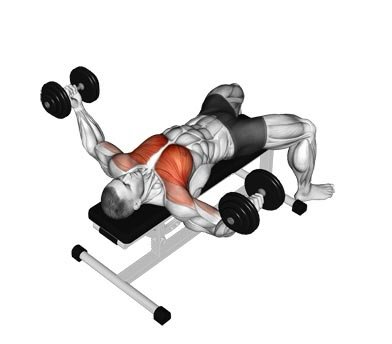Introduction: Achieve Sculpted Shoulders with the Best Exercises
Strong and defined shoulders are key to a balanced, athletic physique. They enhance your overall appearance, improve posture, and contribute to better performance in a variety of physical activities. Whether you’re looking to increase shoulder strength for athletic performance or aesthetic purposes, focusing on the right exercises is essential.
This guide will explore the best shoulder exercises for muscle growth and strength development, helping you achieve a powerful and sculpted look. These exercises target the deltoid muscles (the major shoulder muscles), including the anterior (front), medial (side), and posterior (rear) deltoids. With a combination of compound and isolation movements, you can fully develop your shoulders and achieve balanced, functional strength.
Understanding Shoulder Anatomy
Before diving into the exercises, it’s important to understand the basic anatomy of the shoulder muscles:
• Anterior Deltoid: Located at the front of the shoulder, responsible for forward and upward arm movements.
• Medial Deltoid: The side part of the shoulder, responsible for lifting the arm out to the side and contributing to shoulder width.
• Posterior Deltoid: Located at the back of the shoulder, this muscle controls backward movements of the arm.
By targeting all three sections of the deltoid muscles, you can ensure balanced shoulder development and avoid imbalances that could lead to injury.
Best Shoulder Exercises for Building Strength and Size
1. Overhead Barbell Press
The overhead barbell press, also known as the military press, is a compound exercise that primarily targets the anterior and medial deltoids while also engaging the triceps and upper chest.
How to Perform:
• Stand with your feet shoulder-width apart, holding a barbell at shoulder height.
• Press the barbell overhead until your arms are fully extended.
• Lower the barbell back to shoulder height and repeat for 8-12 repetitions.
Pro Tip: Keep your core engaged to maintain balance and prevent arching your lower back.
2. Dumbbell Shoulder Press
The dumbbell shoulder press is a versatile exercise that allows for greater range of motion than the barbell press, activating more muscle fibers in the deltoids.
How to Perform:
• Sit on a bench with a pair of dumbbells at shoulder height.
• Press the dumbbells overhead, keeping your palms facing forward.
• Lower the dumbbells slowly back to the starting position and repeat for 8-12 repetitions.
Pro Tip: Perform this exercise seated to minimize lower back strain and focus on shoulder engagement.
3. Lateral Raises
Lateral raises are an isolation exercise that specifically targets the medial deltoid, helping to build shoulder width and create that coveted “V-taper” look.
How to Perform:
• Stand with a dumbbell in each hand, arms at your sides.
• Raise your arms out to the sides until they are parallel to the ground.
• Lower your arms slowly and repeat for 12-15 repetitions.
Pro Tip: Use lighter weights to ensure proper form, and focus on controlled movements to avoid using momentum.
4. Front Raises
Front raises target the anterior deltoid, helping to build strength in the front of the shoulder. This exercise also engages the upper chest and traps.
How to Perform:
• Stand with a dumbbell in each hand, palms facing your thighs.
• Lift the dumbbells in front of you until your arms are parallel to the ground.
• Lower the dumbbells slowly and repeat for 10-12 repetitions.
Pro Tip: Keep your torso steady and avoid swinging the weights to maintain proper shoulder engagement.
5. Rear Delt Fly
The rear delt fly is essential for targeting the often-neglected posterior deltoid, which plays a crucial role in shoulder stability and posture.
How to Perform:
• Bend at the hips with a slight bend in your knees, holding a dumbbell in each hand.
• With your palms facing each other, lift your arms out to the sides until they are parallel to the ground.
• Lower the weights slowly and repeat for 12-15 repetitions.
Pro Tip: Keep your back flat and engage your core to prevent lower back strain.
6. Arnold Press
The Arnold press, named after bodybuilding legend Arnold Schwarzenegger, is a variation of the dumbbell press that incorporates a twisting motion to engage all parts of the deltoids.
How to Perform:
• Hold a pair of dumbbells at shoulder height with your palms facing you.
• As you press the dumbbells overhead, rotate your wrists so that your palms face forward at the top of the movement.
• Lower the dumbbells back to the starting position with your palms facing you, and repeat for 8-10 repetitions.
Pro Tip: Focus on the rotational movement to engage the anterior, medial, and posterior deltoids.
7. Upright Rows
The upright row is a compound exercise that targets both the shoulders and upper traps, making it a great addition for overall upper-body strength.
How to Perform:
• Stand with a barbell or dumbbells in front of you, palms facing your thighs.
• Lift the barbell or dumbbells toward your chin, keeping your elbows higher than your wrists.
• Lower the weight slowly and repeat for 10-12 repetitions.
Pro Tip: Avoid lifting the weight too high to prevent shoulder impingement. Focus on keeping the movement controlled and smooth.
Creating a Shoulder Workout Routine
To build strong, balanced shoulders, incorporate a mix of compound and isolation exercises that target all three heads of the deltoid muscle. Here’s a sample shoulder workout routine to get you started:
1. Overhead Barbell Press – 4 sets of 8-10 reps
2. Dumbbell Lateral Raises – 3 sets of 12-15 reps
3. Arnold Press – 3 sets of 8-10 reps
4. Front Raises – 3 sets of 10-12 reps
5. Rear Delt Fly – 3 sets of 12-15 reps
6. Upright Rows – 3 sets of 10-12 reps
For best results, train your shoulders once or twice a week, allowing sufficient recovery time between sessions. Pair this shoulder workout with proper nutrition and adequate rest to maximize muscle growth and strength gains.
The Importance of Recovery and Stretching
Shoulder muscles, like any other muscle group, need time to recover and grow. After each workout, focus on recovery by incorporating stretching and foam rolling to maintain flexibility and prevent injury. Additionally, getting enough sleep and consuming the right nutrients, especially protein, will support muscle repair and growth.
Conclusion: Build Strong, Balanced Shoulders with These Exercises
Developing well-rounded, strong shoulders requires a focused approach with a mix of compound and isolation exercises. By incorporating the best shoulder exercises into your routine—such as overhead presses, lateral raises, and rear delt flies—you’ll enhance your shoulder strength, aesthetics, and overall upper-body performance.
Remember, consistency is key. With proper training, nutrition, and recovery, you’ll be well on your way to achieving the strong, sculpted shoulders you desire.
Scientific Sources:
1. National Institutes of Health (NIH): Understanding Shoulder Muscle Anatomy and Training
2. American Council on Exercise (ACE): Best Practices for Shoulder Training
3. Journal of Strength and Conditioning Research: The Effectiveness of Shoulder Training Protocols
4. Harvard Health: Shoulder Health and Injury Prevention





